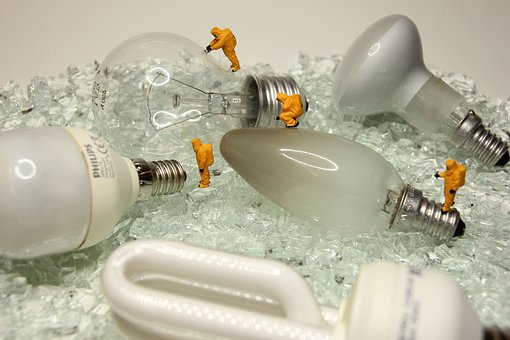IMPORTANT SHADES FOR OFFICE LIGHTING
IMPORTANT SHADES FOR OFFICE LIGHTING
Depending on the activity of the workers and the time spent in front of a screen, it is necessary to adapt the amount of light (so that it is neither too bright nor too bright), to opt for low luminance luminaires which do not cause glare and do not deform the colors of illuminated surfaces.Color of light and color rendering
The luminance phenomenon describes the reflection of light on surfaces and is essential to avoid glare, which has a negative effect on concentration and increases visual fatigue.Thus, if the local enjoy natural sunlight, choose dark colors and matte surfaces, without forgetting to use blinds. If the office is dark, it is necessary to opt for clear colors for a luminous rendering and to increase the visual comfort. Thus, the ideal office should have very light colors on the ceiling, light colors for the walls and darker on the floor. This is a provision that optimizes the diffusion of light, limit glare and give a sense of security to users.
Direct and indirect lighting
In terms of energy design, direct lighting gives better results. It is possible to arrive at specific power values under certain conditions. Depending on the use of the premises or the different spaces, there are three types of lighting from which to choose: uniform general lighting, general lighting oriented as well as punctual lighting.The indirect lighting installed on the ceiling is advantageous in that it limits the glare by the direct sight of the light sources and the decrease of the probability of shade. But there is a flat side energy efficiency that depends on the reflection coefficients of the walls.To choose indirect lighting, it is, therefore, necessary to take into account the ceiling height and the need to oversize the installation by more than 20% compared to direct lighting.
Implant the luminaires: instructions for use
There are different types of luminaires: desk lamps, lighting fixtures, floor lamps, chandeliers, ... which have their own specificities. To ensure the effectiveness of lighting, it is sometimes necessary to use several complementary lighting.For example, chandeliers and ceiling lights illuminate an entire room while desk lamps optimize the brightness of the worktop with their directional lighting. Street lamps and wall sconces provide indirect lighting, with their light reflecting off surfaces such as the wall or ceiling.OFFICE LIGHTING STANDARDS
( General Regulations for the Protection of Work ) specify the different lighting standards of offices, including the fact of giving priority to natural light in sufficient quantity. It is also stated that artificial lighting is necessary if natural lighting is insufficient. Artificial lighting must be provided with general lighting throughout the room to avoid annoying shadows or which may endanger workers. In case the general lighting is still insufficient, it will be necessary to add local lighting, with a desk lamp for example. It should be noted that the legislation recommends general lighting of 300 lux for office work.TRENDS IN OFFICE LIGHTING
Today, the LED lamp is one of the trends in office lighting. The surface lighting is no longer only functional, they also now allow to dress the rooms and endow them with a special atmosphere. Many manufacturers offer customized, custom architectural lighting solutions that meet specific needs.Today, light is not only considered as a means of raw lighting but becomes a vector of staging, and especially as a factor of comfort, well-being and health in a work environment.
As you understand, the lighting needs to be thoroughly studied. To do this, nothing like to use an electrical engineering office.

Comments
Post a Comment